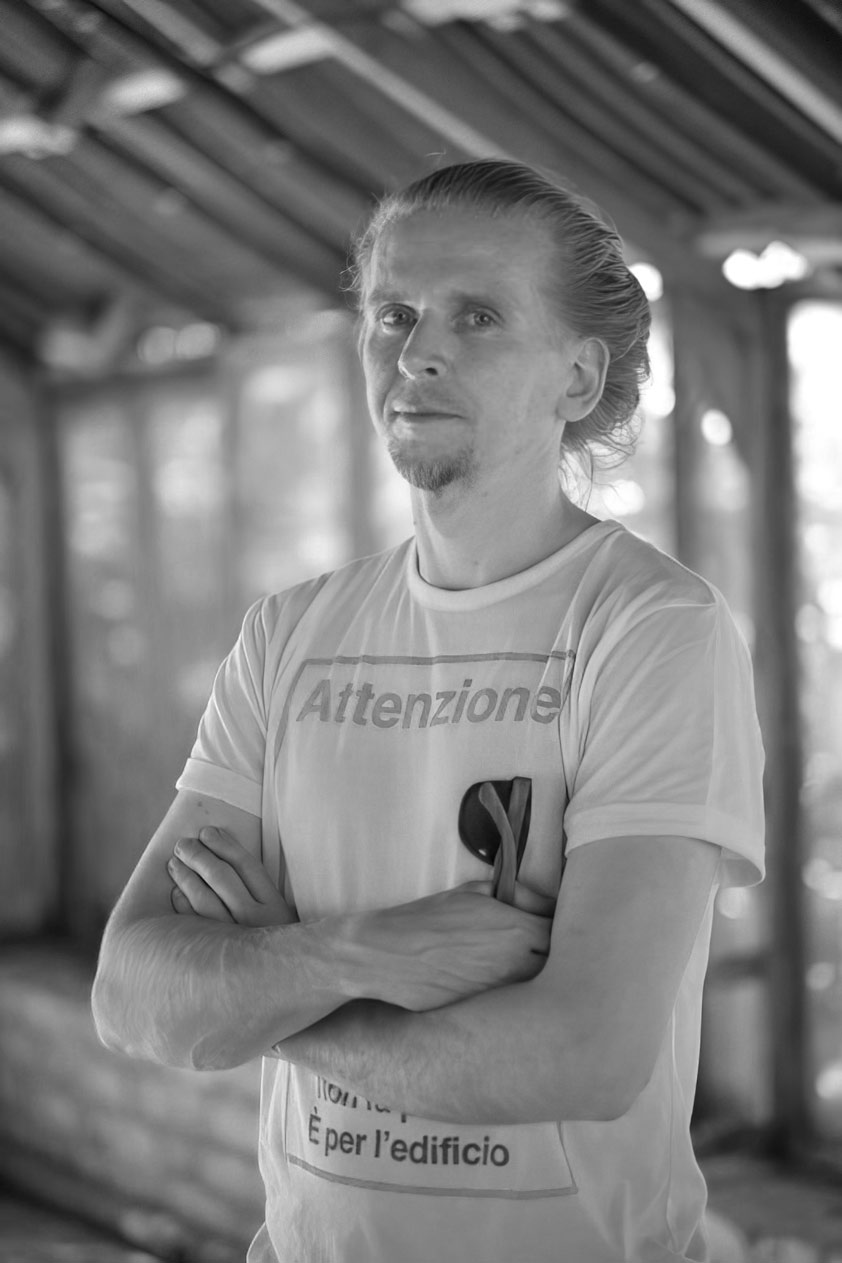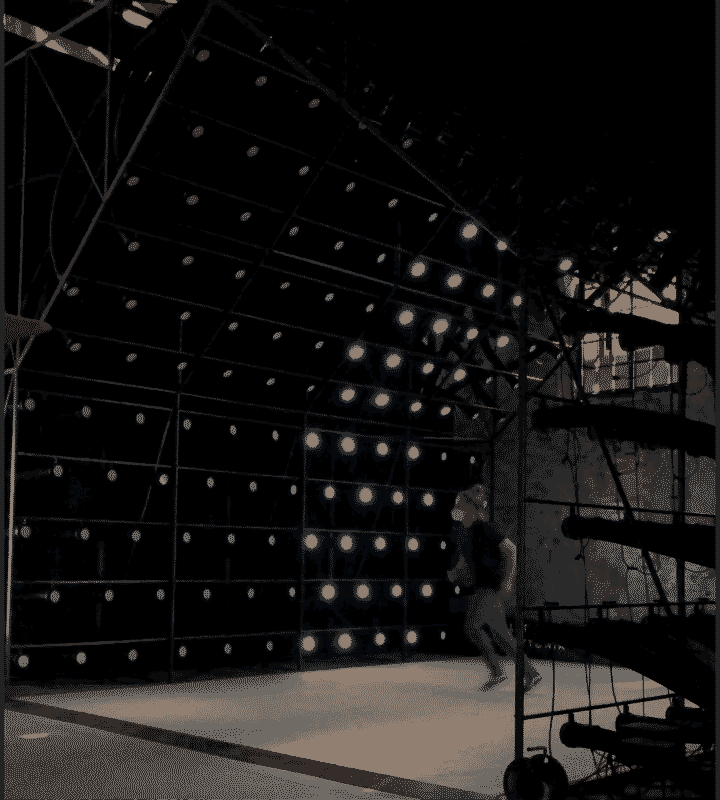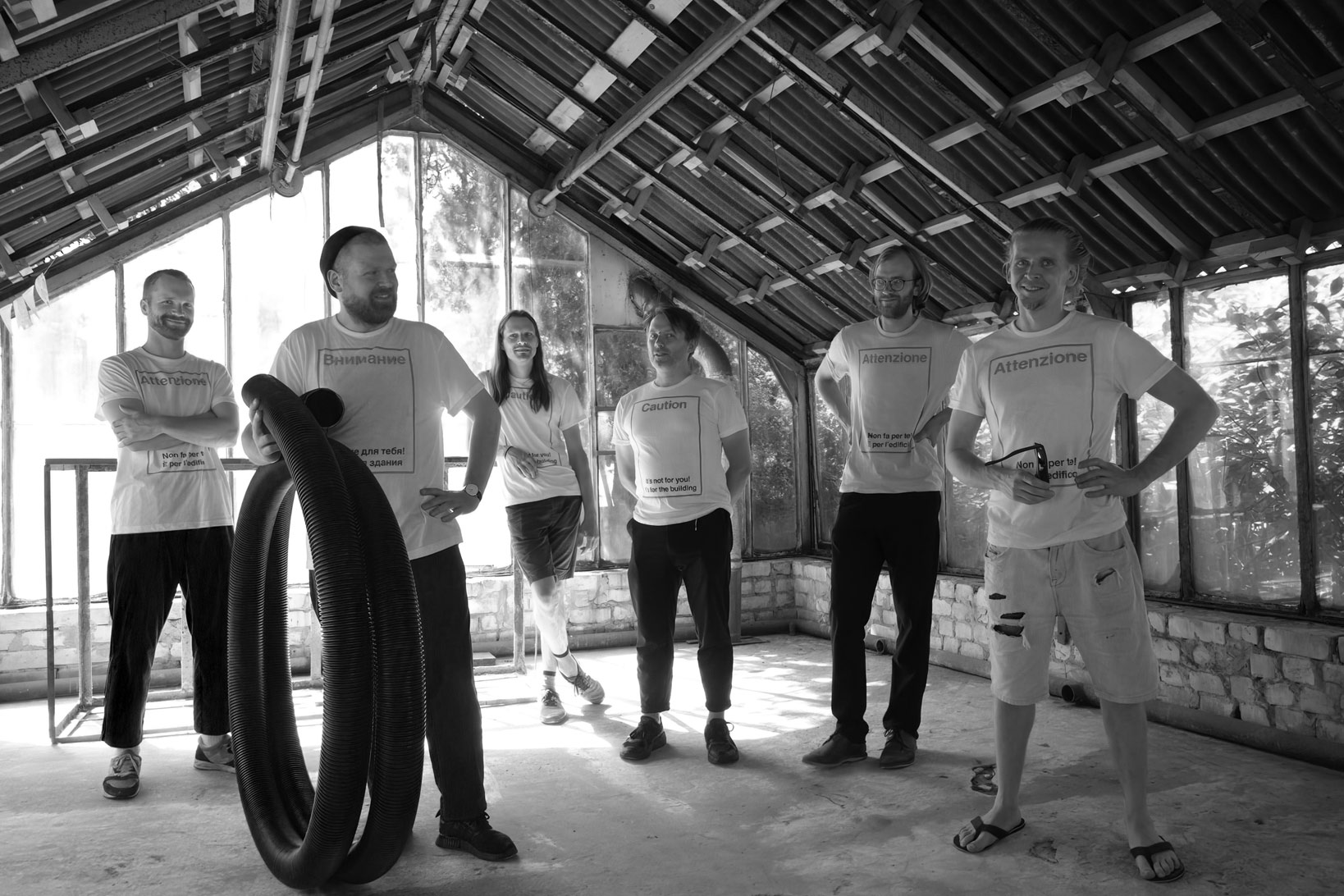
Interaction provision
Mārtiņš Dāboliņš - implementer of the idea of exhibition light installation. Practicing specialist in the field of audio-visual arts.
An intransitive follower of cyber culture and artificial intelligence.

Latvian pavilion "It's not for you! It's for the building" at la Biennale di Venezia
It's not for you! It's for the building
Latvian pavilion at the 17th International Architecture Exhibition.
Curators: NRJA (Uldis Lukševics, Elīna Lībiete, Ivars Veinbergs, Zigmārs Jauja, Ieva Lāce-Lukševica, Inga Dubinska, Līga Jumburga)
Realization: NRJA, Pēteris Riekstiņš, Ansis Bergmanis, Edgars Ošs, Juris Simanovičs, Viesturs Laiviņš, Artūrs Tols, Artūrs Kalvāns
Book: NRJA and Levelup
Idea of the title: Peter Trummer
Graphic design: Alexey Murashko
Illustrations: Ivars Veinbergs
Interaction provision: Mārtiņš Dāboliņš
Audio design: Gatis Ziema
Photography: Ēriks Božis, Andrejs Strokins
Video: Ēriks Božis, Marta Elīna Martinsone
Project managment: Austra Bērziņa
Project manager's assistent: Jeļena Smelova
Communications: Linda Bērziņa
Translators and proofreaders: Raxti (Mārtiņš Sīlis, Oskars Jansons), Will Mawhood, Elīna Lībiete, Marco Benda
Subtitles: Pēteris Masļenčenko
Supported by: Ministry of Culture of the Republic of Latvia, Arctic Paper
Mother Nature has given way to Mother Technology. In our homes, offices and public spaces, technology has become a way of life and it has certainly changed the way we interact with architecture. The growing complexity of mechanical and digital systems presents us with new circumstances to adapt to. How do we live together with the ever-present machine?
The switch to technologically saturated buildings has brought about not only new comforts, but also resistance and suspicion. The machine is no longer a convenient aid — it is now an integral part of architecture. Tangles of devices seem to encroach on diminishing living spaces. Smart solutions produce dumb results. At times, the machine imposes its own rules, alienating people from the spaces designed for them. Some people might view this as dystopian, believing technology has gone too far. But as with most arguments claiming that something has gone too far, the real issue is fear of the unfamiliar.
Our relationship with technology is ambivalent, contradictory, and often fraught with hypocrisy. From within our carefully conditioned fossil-fuelled interiors it is easy to forget that, after all, machines are our own creations, made for our own good. While architecture is struggling to find its relevance on the brink of ecological collapse, technology is not to blame. Quite the contrary – the machines, like the problems they solve, are most often a product of architecture itself.
The installation for the International Architecture Biennale in Venice embodies our contradictory attitude towards technology in a tangible and interactive way. At first sight, the tangle of black pipes looks like a foreign object that has overrun a human environment like a parasite. However, the installation urges passers-by to change their attitude and recognise a friendly neighbour in this seemingly frightening stranger, who responds to our presence and even addresses us in its own incomprehensible but reassuring language. This experience of coexistence between humans and man-made machines inspires us to create a sustainable partnership, simultaneously calling us to reassess the growing role of technology in contemporary architecture.
And if the current global health crisis has taught us anything, it is that when Mother Nature turns its back on us, technology turns from foe to friend. Cities are more than just clusters of buildings, and machines can bridge the connections interrupted by the “new normal”. Technology is a means to an end. What may have seemed only “for the building”, proves to be “for you” after all.
© NRJA
